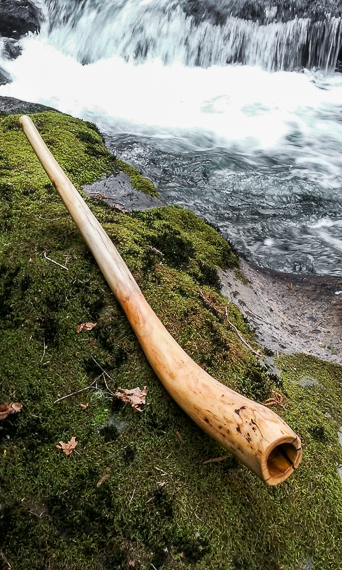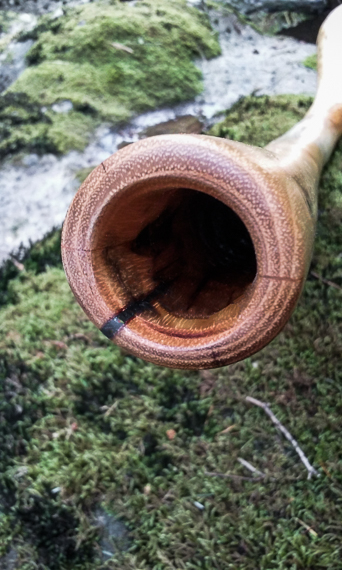DIDJ NUMBER - 664



This instrument came from a tree that stood in my front yard for many years. At one time there was an old cut up car tire hanging in it as a makeshift basketball hoop for kids to play with. After the tree got cut down I used this section, with about another 5 feet intact, as a corner post for my Ganja plants' greenhouse. Even after the greenhouse came down this log stayed posted in my orchard, enduring weather and gaining history. I've envisioned it several times as a didge and so now I've freed it from it's servitude in one place, and transformed it to allow loving service in another fashion, as the didgeridoo it appears as now. Playing it gives the sense that it's solid and well constructed. It interacts so beautifully with vocals and harmonics. The higher backpressure makes it nice to push against, raking out the drone from soft to heavy and back again. It has really nice expressive overblowns and the trumpets are right there without having to go searching or making dramatic adjustments which makes it just as ideal for blunt style percussive as it does for meditative play. It's an all around winner all wrapped up in a decent size package. Fits right there with you wherever you go. It's a best buddy kind of didge. I should add that the tuning, for me, is between D and Eb, but the website template won't let it read that way. If you play with other musicians the tuning could be irritating to them, and they'd want to tune up or down to match you, but if you play solo like the vast majority of didge players it won't matter. Will Thoren wrote a pretty good article on didge tuning. It's at his wetdidgeridoo.com website in the didge school section. It's a great site with great resources. Check it out.
DIDJ # -
664
WOOD TYPE -
Locust
KEY -
D
TRUMPET -
F, C, G
LENGTH -
60 1/2 inches
MOUTHPIECE -
I.D. - 1 1/8 inches
O.D. - 1 3/4 inches
BELL -
3 1/2 x 4 1/2 inches
PRICE -













